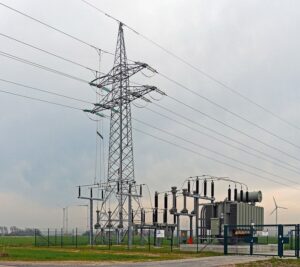 FBG sensor interrogator systems can be deployed into a variety of fields. These products feature high reliability, advanced command and data output control, and incredible speed and sensing range.
FBG sensor interrogator systems can be deployed into a variety of fields. These products feature high reliability, advanced command and data output control, and incredible speed and sensing range.
Fiber Bragg grating (FBG) sensors have been well known and widely used for around 20 years for the following reasons: they are light, compact, easy to install, require very low maintenance, can be used in highly explosive atmospheres, and are immune to electromagnetic interference. Fiber optic sensors have a wide range of possible applications, which include temperature sensing, strain and bending measurements, medium refractive index measurement.
Despite numerous advantages of fiber optic sensors, it is important to install an FBG interrogator to retrieve accurate data and measurements from the sensors. Here is the main principle of how the fiber optic interrogator works: after the light has been sent into the fiber and has been reflected from the FBG, it travels to the interrogator – it’s photodetectors – which then compares it to the wavelength reference artifacts; after that, the interrogator determines the position of the FBG center wavelength. This information is later converted to some measurement units.
There are multiple types of FBG interrogators; each type offers different advantages over others, for example, the number of optical channels and Wavelength range. For example, high-frequency FBG interrogators provide an opportunity to work with dozens of fiber optic sensors at high speed. This characteristic also provides an opportunity to use multiple fiber optic interrogators at once.
The wavelength range of the FBG interrogator plays an important role when it comes to how many wavelengths or bandwidth information from an FBG sensor it can process. Some FBG interrogators have a very limited wavelength range, only around a few nm, however, this is not ideal for most FBG systems. The broad wavelength range of the interrogator provides better measurements.
Another important characteristic of FBG interrogator is the number of optical channels. Each channel represents an optical line, therefore, the bigger the number of optical channels, the more optic lines the interrogator can handle at once. Most interrogators have one optical channel and dedicated to one particular optic line.
Other approaches to FBG sensor interrogating, some of which include:
- Broadband source, Dispersive element, Diode Array;
This method is less reliable than the aforementioned ones due to limited resolution, which is a result of the inherent limitations of commercially available diodes.
2.Broadband source, Optical Spectrum Analyzer/Multi-line wavelength meter;
optical spectrum analyzers are large and expensive, which makes them less desirable in a laboratory setting. They are also not able to perform optimally under some temperatures.
3.OTDR/TDM systems;
The system cannot handle a large number of sensors on the fiber as its data acquisition rates scale down with increasing sensor counts.
4.External Cavity Tunable Laser, Power Meter, Wavelength Meter;
External cavity tunable lasers have low speed and do not have a wide operating temperature range. Moreover, they are expensive and do not have the required mechanical robustness.
Optromix interrogators can control up to 8 optical channels. The interrogator operates with the 20 maximum sensors per channel. The device is controlled by the PC with the specialized software for sensors monitoring. The system contains a broadband source of radiation and it can carry out spectrum analysis.
Optromix, Inc. is a U.S. manufacturer of innovative fiber optic products for the global market, based in Cambridge, MA. Our team always strives to provide the most technologically advanced fiber optic solutions for our clients. Our main goal is to deliver the best quality fiber optic products to our clients. We produce a wide range of fiber optic devices, including our cutting-edge customized fiber optic Bragg grating product line and fiber Bragg grating sensor systems. Optromix, Inc. is a top choice among the manufacturers of fiber optic devices.
If you have any questions, please contact us at info@optromix.com






 This year, for the first time ever, scientists have fabricated sensing elements known as
This year, for the first time ever, scientists have fabricated sensing elements known as  A real-time thermal rating system has been developed initially for overhead transmission lines using actual meteorological data and real-time conductor temperatures and line loadings. Such a real-time thermal rating system provides much higher ampacity ratings than other conventional methods. A natural convective heat equation is developed for stranded conductors. The temperature of the conductor is solved directly without resorting to an iterative solution.
A real-time thermal rating system has been developed initially for overhead transmission lines using actual meteorological data and real-time conductor temperatures and line loadings. Such a real-time thermal rating system provides much higher ampacity ratings than other conventional methods. A natural convective heat equation is developed for stranded conductors. The temperature of the conductor is solved directly without resorting to an iterative solution. Measurement of angular velocity is useful in many different applications, from missile navigation to motion control. There are three broad categories of possible sensors for angular velocity: Ring Laser Gyroscopes (RLG), Fiber Optic Gyroscopes (FOG), and MEMs-based Gyroscopes. The former two utilize the Sagnac effect to measure velocity and are much more sensitive compared to MEMs gyroscopes. A fiber optic gyroscope (FOG) is a device that senses changes in orientation using the Sagnac effect. Such a
Measurement of angular velocity is useful in many different applications, from missile navigation to motion control. There are three broad categories of possible sensors for angular velocity: Ring Laser Gyroscopes (RLG), Fiber Optic Gyroscopes (FOG), and MEMs-based Gyroscopes. The former two utilize the Sagnac effect to measure velocity and are much more sensitive compared to MEMs gyroscopes. A fiber optic gyroscope (FOG) is a device that senses changes in orientation using the Sagnac effect. Such a  Fiber optic products
Fiber optic products